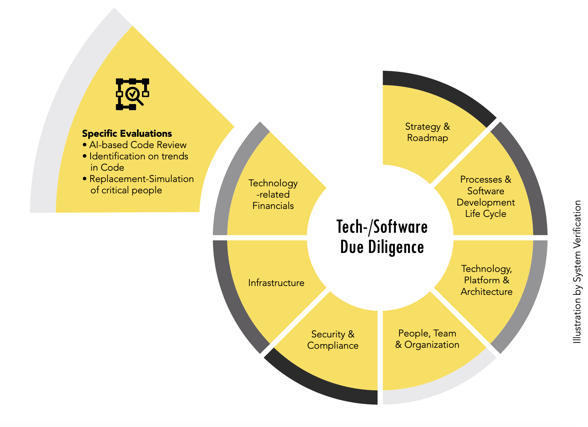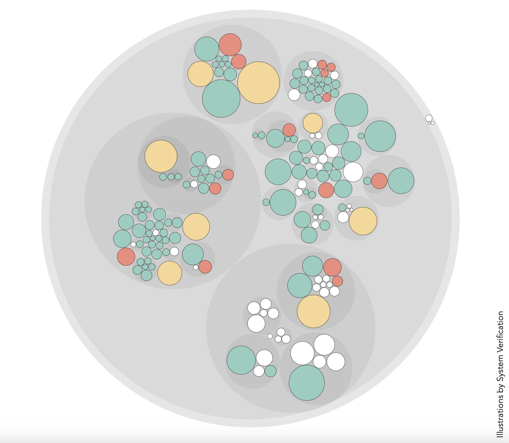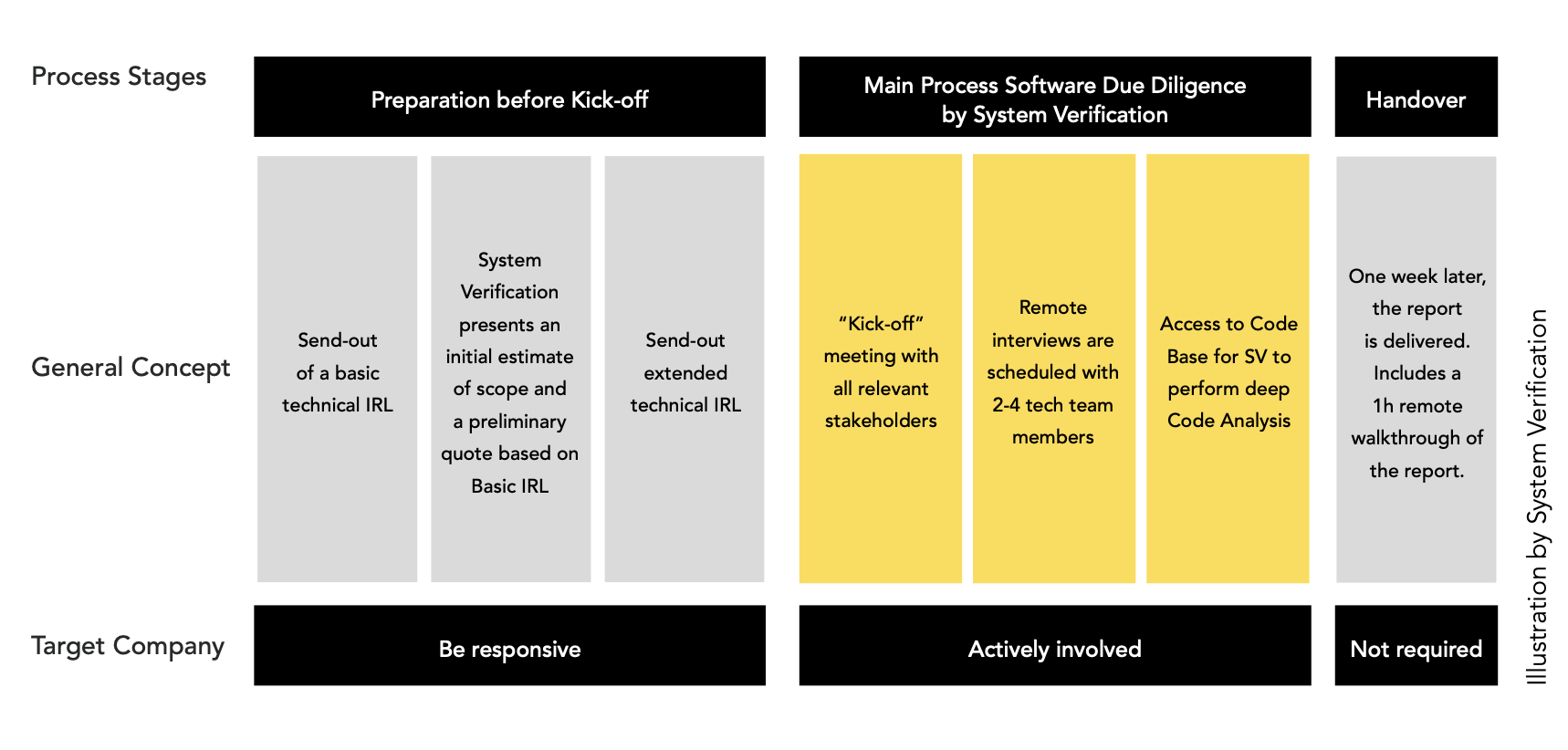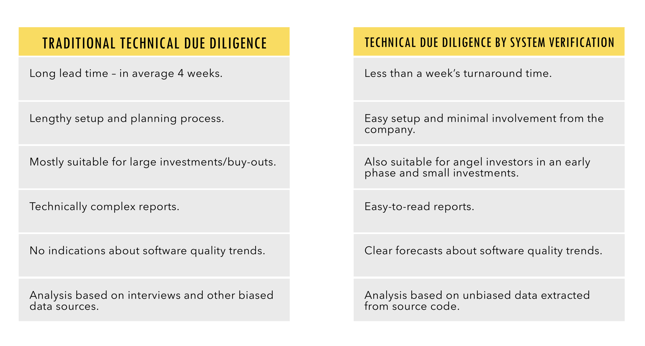
Our approach and work methods are based on the knowledge and expertise we have accumulated from our 20+ years in software development and quality assurance. Thanks to this, and the specific evaluations we have added to the TDD process, in-depth data can quickly be generated on the software and precise derivatives formulated. This means that you, as an investor, can avoid any unpleasant surprises – you will have a clear picture of the quality of the software systems you are about to acquire.

Using software based on Machine Learning (ML), the code base is analysed and evaluated in just a few hours. This analysis not only includes the code itself but also team structures and developments over time. Software experts evaluate the metrics to identify defects, vulnerabilities, and issues. The findings are recorded visually and in a report so that the results are easily actionable.
For these evaluations of code, System Verification uses a tool developed by a partner company. This tool is able to intelligently analyse data within hours. Present and historical data are analysed in order to identify areas with lower code health and high change frequency, i.e., areas with high development costs. Based on this, our software experts can pinpoint the most relevant places to start the analysis. In addition, the code analysis software also enables the quantification of technical debt and the identification of code trends. This provides valuable indications for the future development of the analysed software.
Key personnel can also be quickly identified through the same set of data. This means the data also reveals the corresponding code familiarity – i.e., how much of the complete code base is written by the active team?
In addition to the code health analysis tool, other tools are also used to perform OWASP Top 10 security scans and potential open-source security and licensing problems.

ANALYSIS OF THE SOFTWARE DEVELOPMENT LIFECYCLE
The purpose of the SDLC analysis is to understand the strengths and weaknesses of the End-to-End process when it comes to providing customer value in a production environment. The analysis is divided into four areas: 1) requirement process, 2) development process, 3) test and QA process, and finally 4) deploy and release process. This analysis aims to assess the efficiency of providing a good flow of features/value to an end-user.
THE BENEFITS OF OUR TECHNICAL DUE DILIGENCE SERVICE
System Verification’s Technical Due Diligence varies depending on the required scope of the analysis. In the case of comprehensive due diligence (which is performed in most cases), the analysis is streamlined into two parallel processes: one technical and one organisational. The latter is based on interviews. The technical findings are used as input to the interview sessions. The combination of intelligent tools for code analysis and in-person interviews reduces the turnaround time to approximately 10 working days. This makes System Verification's Technical Due Diligence service an attractive product for M&A advisors, private equity firms, venture capital firms, and other investors.

System Verification's TDD process follows the steps outlined above. At the end of the process, we provide a comprehensive report with in-depth references to the code or to the interviews. In addition, the target company can also receive access to the results so that appropriate measures can be initiated.

Want more details on how we can help you with your Technical Due Diligence? Get in touch!







